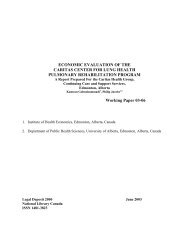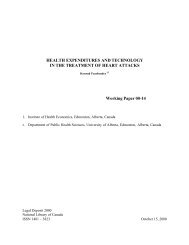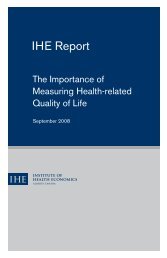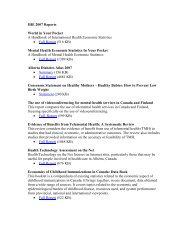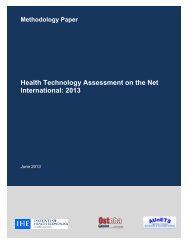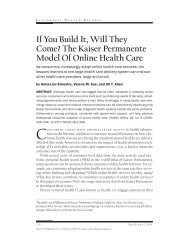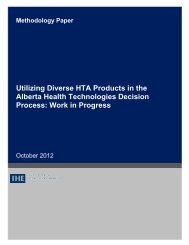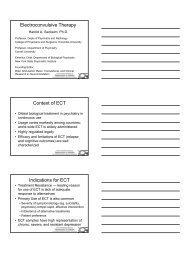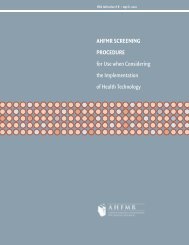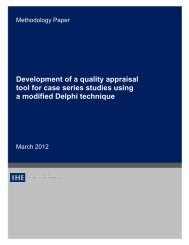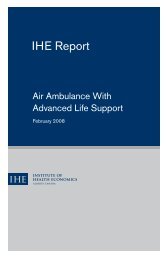Bariatric treatments for adult obesity - Institute of Health Economics
Bariatric treatments for adult obesity - Institute of Health Economics
Bariatric treatments for adult obesity - Institute of Health Economics
- No tags were found...
You also want an ePaper? Increase the reach of your titles
YUMPU automatically turns print PDFs into web optimized ePapers that Google loves.
groups. Compared with standard care, the costs per QALY gained <strong>of</strong> LM ranged from $910 <strong>for</strong> 55-year-old men to $6255 <strong>for</strong> 25-year-old women <strong>for</strong> overweight patients; from dominant (due to moreeffective and less costly) in 35-year-old women and 55-year-old men to $3164 in 25-year-old women<strong>for</strong> moderate obese patients, and the costs from dominant (due to more effective and less costly) inall males to $3008 in 25-year-old women <strong>for</strong> borderline patients. The study concluded that LM wascost-effective option in long run.Quality assessmentThe quality <strong>of</strong> the selected studies was assessed using criteria adapted from Drummond et al. 2,3 Theassessment considered the methodological approaches applied to enhance the internal validity andtransferability <strong>of</strong> the studies. This included a data extraction <strong>of</strong> the following:study question;study type;perspective;time horizon;reliability <strong>of</strong> clinical evidence;cost calculation; methods <strong>of</strong> handling uncertainty.Overall, the studies met our quality criteria. Cost categories included in the studies were consistentwith the stated perspective. Evidence <strong>of</strong> effectiveness came from RCTs, which provided greaterinternal validity <strong>of</strong> clinical inputs used in the studies. However, measures <strong>of</strong> health-related quality <strong>of</strong>life (HRQOL), which was the measure <strong>of</strong> health benefit, were not sufficiently described in thestudies. Consequently, the measures <strong>of</strong> health benefit may not accurately reflect the populationsincluded in these studies.It is also important to mention that it is uncertain how generalizable the results are to the Albertacontext. Studies were conducted in various European countries, Australia, and the US, and, althoughthey generally met our quality criteria, they did not provide the detail necessary to determine whethertheir analysis is comparable to the epidemiological and health system characteristics <strong>of</strong> Alberta.Results from Analysis <strong>of</strong> Provincial <strong>Health</strong> Utilization DataCosts <strong>of</strong> bariatric surgeryTable E.3 presents the number <strong>of</strong> the surgical patients, by city, in 2006. Two hundred seventeenpatients, having a mean age <strong>of</strong> 39 years, and 87% <strong>of</strong> whom were women, underwent a bariatricsurgical procedure in Alberta.Table E.4 shows the mean cost <strong>of</strong> bariatric surgery in 2006. Mean costs per bariatric surgery <strong>for</strong>inpatient and physician services were $10,763 and $2189, respectively. When combining bothinpatient and physician services, the mean cost was $12,176 per bariatric surgery.<strong>Bariatric</strong> <strong>treatments</strong> <strong>for</strong> <strong>adult</strong> <strong>obesity</strong> 170



